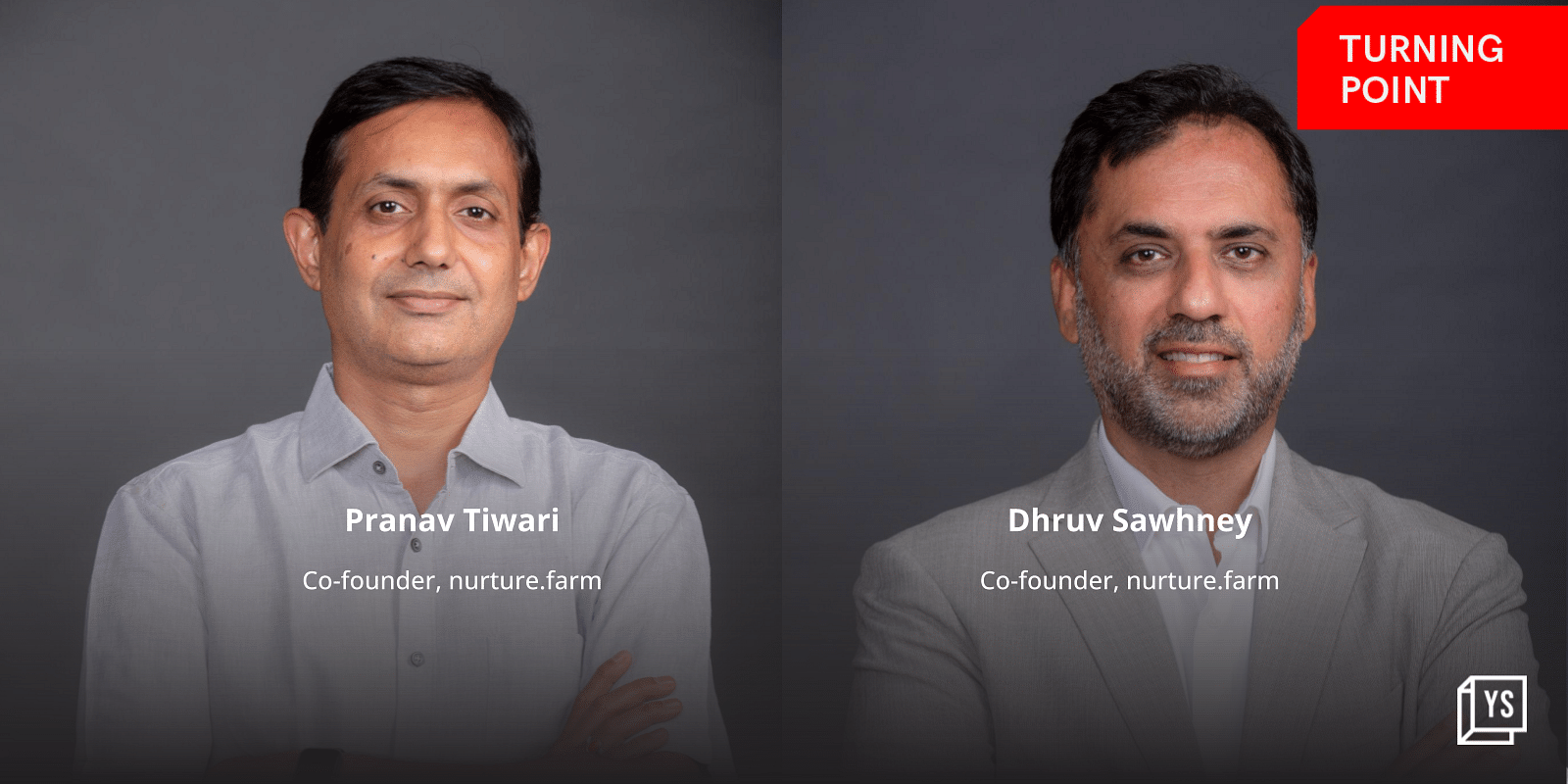India is the second-largest agricultural market in the world. It is the world’s second-largest producer of essential staples, including rice, wheat, fruits and vegetables. Agriculture is also the primary source of livelihood for over 50% of the population.
And yet, India is the world’s third-largest emitter of greenhouse gases. Realising the need to push the envelope and drive feasible, scalable, and replicable innovations in the agri sector, Pranav Tiwari and Dhruv Sawhney started in 2020.
The Bengaluru-based startup partners with farmers to bring technology, mechanisation, and digitisation to farming and improve their livelihood.
The idea
Before starting nurture.farm, Dhruv founded WOTU (now Hyperpure), which was in the food supply chain business. The company was later acquired by Zomato.
Hyperpure helped restaurant partners source quality food ingredients at affordable prices. “At Hyperpure, I realised the growers who cultivate, nurture, and produce the food we eat are short-changed at every supply chain step,” he tells YourStory.
This made him want to probe into the segment and made him realise that farmers lacked access to information, credit, insurance, technology, capital, and market linkages. The entire food cultivation industry was broken, fragmented, and needed transformation.
The company then took the approach to tilt the status quo for the farmers by creating a digital-first agri ecosystem that helps connect the dots, and deliver full-stack solutions for every crop cycle stage of the farming cycle.
“We believe that by nurturing a sustainable ecosystem that intervenes at every step of the farming life cycle, we can foster the growth of resilient growers by making the shift to sustainable practices. Hence, we are working towards making agriculture resilient, profitable, and sustainable for generations to come through technology-led solutions,” says Dhruv.
Over the last two years, nurture.farm has built digital highways to connect the heartlands of rural India by building robust technology platforms, agri ecommerce marketplaces, market linkages, supply chain networks, advisory services, financial solutions, and shared economy models.
The company built out its solution by identifying key areas such as agri-inputs, farm mechanisation, and sustainable agriculture practices.
But Dhruv says that initial ideas or eureka moments are never the final product. “The current evolution of our product or services is not an outcome of a lightbulb moment. Instead, it’s a creation of our learnings, experiences, feedback, and the journey we undertook about three years ago,” he adds.
What now?
Today nurture.farm has over 2.5 million farmers onboard and has serviced over 7.5 million acres of farmland.
To carry out ground-level operations and bridge the digital divide between farmers, nurture.farm claims to have built India’s first and biggest rural gig-economy model, deploying a 12,000-strong field workforce in over ten states in India.
Using its multiple programs for critical crops being cultivated in India like paddy, sugarcane, wheat and others, it has been successful in driving sustainable farming adoption in AP, Telangana, Punjab, Haryana, and Uttar Pradesh for more than 200,000 farmers, and transformed over 750,000 acres of land to sustainably cultivated land.
According to the co-founders, nurture.farm has have been able to mitigate more than a million tonnes of carbon dioxide, reduce methane emissions by 50% for paddy crops, and saved millions of gallons of water in the process.
“At nurture.farm, we are well-positioned to drive this sustainability and innovation prerogative, and are already leaving behind an indelible mark on the global agricultural ecosystem by becoming the first company to have forward-sold potential agriculture-related carbon credits,” says Dhruv.
On the growth front, the company plans to double down on profitable initiatives, continue to scale up sustainable programmes, and work on the missing pieces of the puzzle that act as roadblocks to long-term profitability.
The company said it will continue to build India’s largest ag-input marketplace for its retail business and will focus on adding more brands and ag-input manufacturers, scale its retailer network, and take a more robust approach by concentrating on profitable geographies.
For the next 24 months, the startup plans to gear up to increase its GMVs by 100%, improve its revenue and profitability by 150%, double its farmer base and acres serviced, partner with more than 67% of retailers in India, increase accessibility to more than 20,000 pin codes, and turn 5 million of acres of land to sustainably cultivated land.



![Read more about the article [Product Roadmap] How fintech startup PayMe evolved into a full-stack digital lender in just five years](https://blog.digitalsevaa.com/wp-content/uploads/2022/03/PR1-1647346135418-300x150.jpeg)






